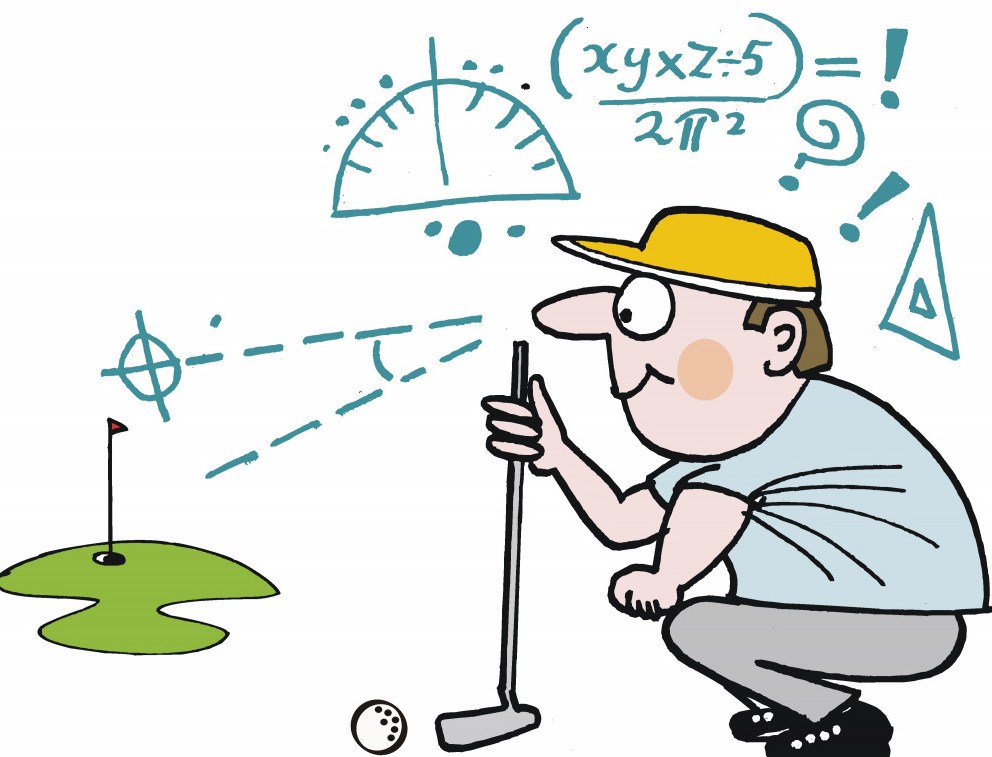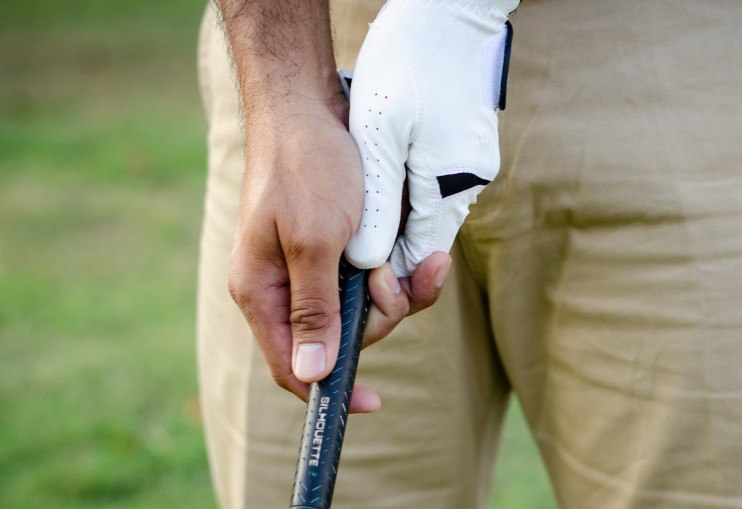Putting is, unfortunately, a bit of an issue for me. I have moments when I feel like I can hole anything but these are few are far between. Far more common for me is the desire to snap my putter in two and simply pick the ball up when I get on the green, In all honesty, putting is one of the main reasons why I don’t really play individual stroke play competitions anymore. If I could learn how to be a better putter, would this change my golf game for good?
- Master the Mental Game
- Create a Routine
- It might be the Equipment
- Time to Change your Putting Stroke?
The Mental Game of Putting
It has been said time and again that putting is, in many ways, a game within a game. There are golfers who are giants in terms of ball-striking and yet play like putting pygmies. Even the greatest of them all, Ben Hogan, had his putting woes. I certainly wouldn’t class myself as a great ball striker, and yet I certainly follow this general pattern. An example this week show this perfectly. I hit an absolutely pure five wood into a tricky narrow green from a decent distance. This would be a hard shot by anyone’s standards and yet I felt I had a reasonable chance of pulling it off. I certainly didn’t feel stressed or under pressure as I stood behind the ball.
Once I got to the green , it was a different story. Rather than thinking about how I could sink that 20 footer, all I was really concerned about was getting it close enough to be a gimme. Sure enough, one nervous stab later and I was looking at 6 feet to save par. I will spare you the details, but you can probably guess what happened next.
So what went wrong? By any measure, hitting that five wood was a far harder shot. Of course, I can’t do that every time, but any golfer in the world would have been happy enough with it. And yet my effort on rolling a ball towards a hole from twenty feet would have disappointed your average 18 handicapper. There are people who don’t really play the game who would probably do just as good a job.
Of course, I can make this putt too. The problem is that my confidence level as I hit it puts my expectations far lower than where they really should be.
There are countless examples of this in the game. Of course, the dreaded yips (which is both a physical and mental issue) can raise its ugly head, but even without this, putting can be a mentally tough thing.
Think About Possibility not Obligation
Ironically, I do have something that has been working for me on my quest to become a better putter and it is all to do with changing this mindset. When I step up to hit an iron, I am not thinking about what can go wrong. I am far more interested in the possibility in front of me. Of course, I might hit an absolute shocker, but I am happy to try to hit at a tight pin or carry that pot bunker. I enjoy the challenge and get pleasure out of the attempt to pull it off.
I have also managed to start to transfer this feeling to my driver over the last year of so. Previously, it was very much like my putting. I saw trouble everywhere and was simply happy with a mediocre result that kept me in bounds. Now, I am starting to see possibilities. I feel like I can try to draw or fade it round the corner or whatever. It is a long way off the finished article, but the mental approach is heading in the right direction.
Putting is taking somewhat longer. I suppose it is because of the short distances involved. I feel like I should be making the putt and this burden of expectation creates the opposite of a relaxed stroke.
So what can this teach anyone trying to become better on the greens? Look at opportunity rather than what you might think you are supposed to do. We will look at some technical changes next, but the first and most important key is to enjoy the idea of making a putt rather than worrying about what happens if you miss. Easier said than done for sure, but a very important first step.
In concrete terms, forget about the next putt. Don’t worry about cosying it up to the hole or whatever. The only thought should be to get the ball in the cup. This isn’t a long-term strategy, but can be very good for getting over the fear of missing. we are scared to miss because of what happens next. Maybe a 6 footer coming back, a potential three-putt or whatever. If the only thing that counts is this putt, all the rest becomes redundant.
Routine is King
If the mental game is progressing, the next step on our journey on learning how to be a better putter is creating a bullet-proof routine. This doesn’t have to be very complicated, but should cover a few key bases. For example:
- Reading the green
- Getting the feel for the pace
- Picking a line
- Settling into your stance.
I don’t like taking too long over any shot, but I have definitely benefited from building a routine. It helps me make a better decision in terms of line and pace but also get into a sort of “putting zone” where I feel like I am reading to hit the putt. This is my routine but obviously there are many ways to skin this particular cat.
Firstly, I mark the ball, pick it up and clean it. I then go a few steps behind the ball and crouch down. From here I look at the slope and pick a line. I then go back to the mark, and take a couple of practice strokes, usually with at least one of them looking at the hole rather than the ball mark. This gets me a feel for pace. I then place my ball on the mark as I crouch down looking at the hole again. Then I get into my stance, put the left hand on the putter and then the right. A last look up at the hole, down at the ball and then stroke the putt.
This might seem long or complicated, but it could be as little as 30 seconds from start to finish and rarely longer than a minute or so. During this time I am also clearing my mind and at least attempting to think of this putt and not the potential one coming back! As I said before, this is a work in progress with some days being better than others. I am heading in the right direction.
Pick the Right Putter
Picking the right putter is also important if you want to improve. This is a mix of art and science. For example, some people are going to prefer looking at a mallet. For others, something simple like the Ping Anser shape is more fitting to their eye. The same is true for things like grip size/shape, head weight and shaft length. This is also where personal preference meets science.
For example, I generally prefer a simpler putter head shape. I just don’t like something like the Spider style. However, I haven’t tested this out under lab conditions. Would might stroke be more consistent? I just don’t know. One of the reasons I haven’t tested this is because I don’t want to find out that what I refer visually isn’t actually any good for my game!
I do know from trial and testing that a longer, heavier putter helps me. Given my handsy stroke, this is a hardly a surprise. For me, I know that I am likely to putt better with something that has quite a heavy head and a 36-inch shaft for example. However much I like something aesthetically, I won’t do well with a lighter, shorter putter.
If you can have a full-on putter fitting with Sam putt lab or whatever, you will get a lot of this information. You can also work it out for yourself by spending enough time on the putting green with various different shapes and styles of putter. Or maybe sign up for a fitting the next time there is a demo day at your local course.
How to be a Better Putter by Changing Your Stroke
I have talked about this before in my series of articles on the yips, but making a radical change in putting stroke isn’t always such a bad idea. If you are locked into a routine of poor putting, sometimes you need to make a significant change to break out. This might seem extreme, but actually isn’t. Putting is a very simple motion. It takes less than five minutes to learn the essentials of putting, even if you have never done it before.
IF you don’t believe me, just try it. change to a claw grip, or left-hand low. Chances are, you are more than capable of putting reasonably well from the off. Many people (myself included) putt fine left-handed. Starting again with a new method allows us to let go of all that negative junk that has been causing problems. It can even work wonders for the mental game. After all, expectations are gone if you suddenly start putting with the other hand or whatever and this really frees up the stroke.
Of course, when all is said and done, practice will make perfect, but there is no point practising until all the other ducks are lined up. I generally putt very well on the practice green but I am not worried about three putting them, am I? However, once you get the mental game in a better space, find a putter that works for you, get that routine set and maybe even make a big change to grip or stance, you might find that improving your putting is simply a question of putting in the time on the practice green.




